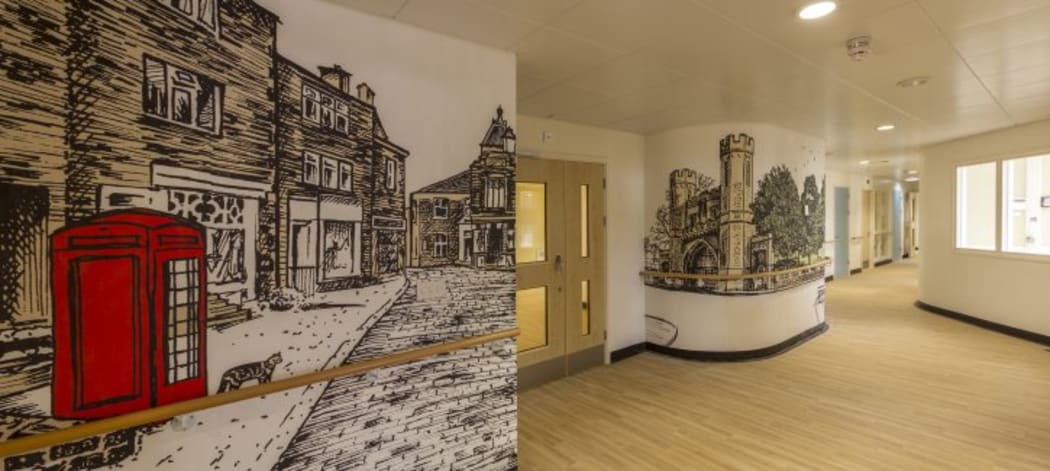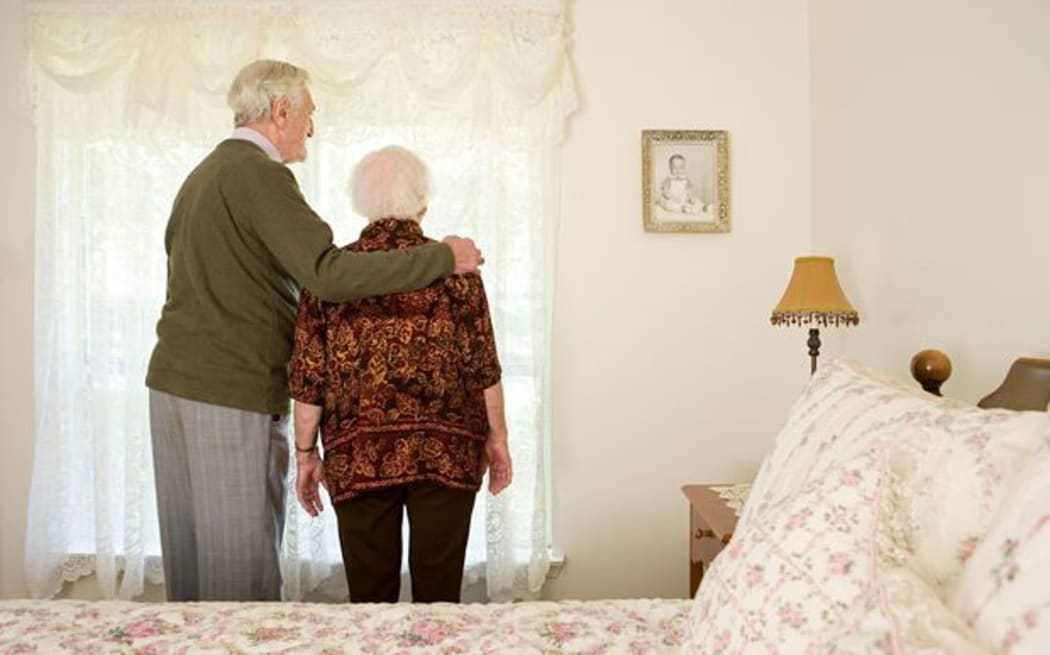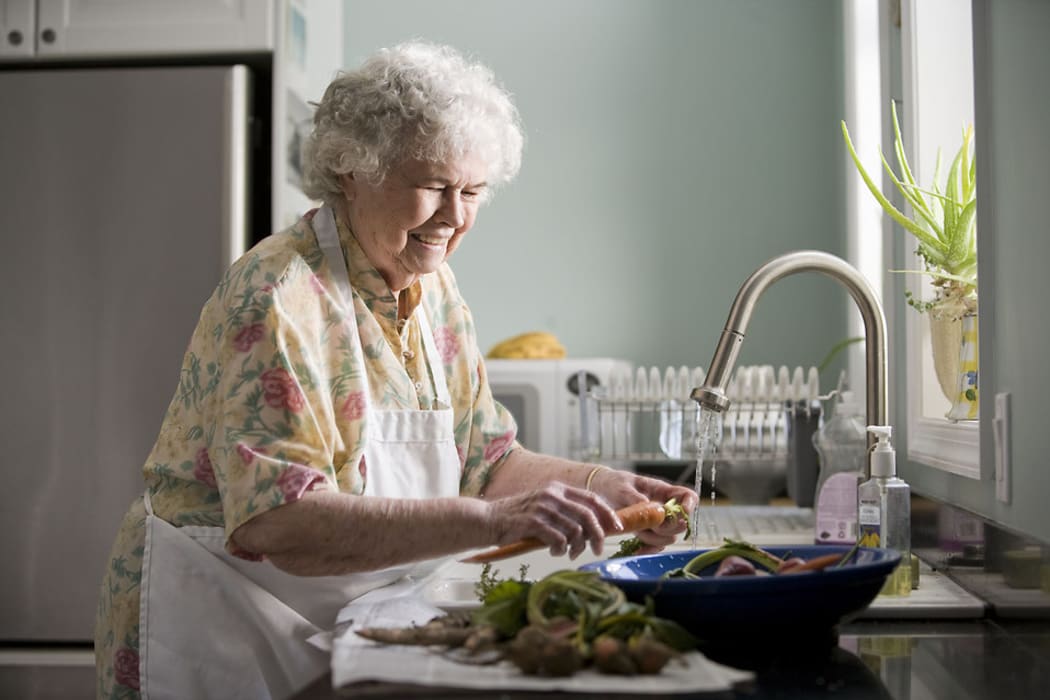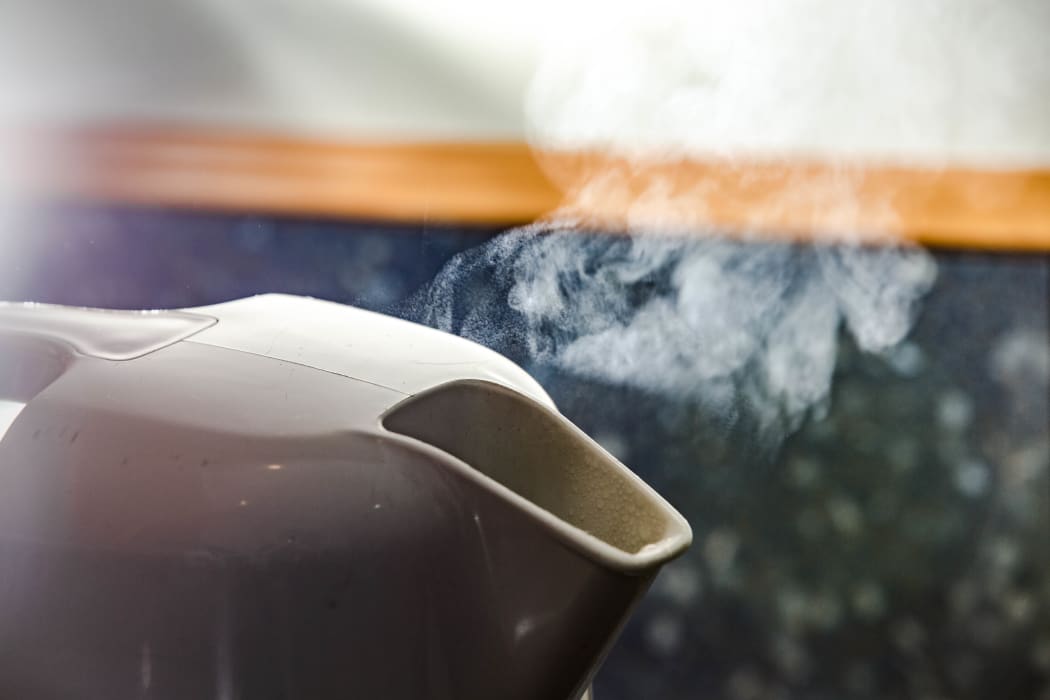With the number of New Zealanders with dementia - currently about 60,000 - expected to rise as the baby boomer population ages, an architect says good design, accoustics and lighting can make a big difference to quality of life.

Photo: supplied
Now, thanks to work at Stirling University's Dementia Services Development Centre in Scotland, architectural changes are being used to guide designs for buildings that might house dementia patients.
Lesley Palmer is chief architect at the dementia centre, and tells Bryan Crump of Nights that people with dementia operate at a higher level of stress at all times.
"One of the most prominent and understood symptoms is certainly memory loss, which is the cognitive decline, but there are other symptoms such as behaviour change, high levels of stress, agitation and perceptual problems which leaves people having difficulty understanding and interpreting their environment.
"Some of the challenges can be understanding who they are, understanding the environment that they're in, and who the people are that are around them."
Lesley has developed a free app for anyone to download and use in their own home or work environment, which gives illustrated guidance on the dementia design principles:
She says it's all part of a non-pharmacological approach to reducing behavioural changes and stress through a calming and very legible environment: prompting memory, helping someone feel calm in their environment, and prompting cues.
"And our older populations are very vocal in their demands too, so they're driving a change and demanding a change in an increase in the quality of the spaces that we're designing."
She says the global interest and public awareness on how to create good enabling age-friendly and dementia-friendly environments is increasing.
Light and sound

Photo: 123rf
Dr Palmer says light is very important in the design prinicples.
"The older eye needs more light … we see a yellowing of the lens and a reduction of the ability to distinguish between colour and tone, and certain colours are lost as the eye ages," she says.
"For example, the blue wavelength of the eye deteriorates quicker than the red.
"That is superimposed with a reduction in their ability to perceive what the eye is seeing, so they may be able to see an object but they may misinterpret that object.
"Misinterpreting shadows on a floor, misinterpreting shiny floors as being wet floors, and that increases the risk of them being likely to trip and to fall."
She says a consistent level of light is needed, but that needs to be weighed against the increased sensitivity to glare from reflections and artificial lighting.

Photo: supplied
"... from downlighters on reflective vinyl floors for example in the bathroom, so to overcome that there's a lot of uplighting required so that you have that horizontal luminance.
"Having sheer fabrics on windows, so that you don't have shadows being cast during the day or a lot of glare coming through."
Technology is improving our ability to bypass some of these problems, however.
"In the past five or six years with the introduction of good quality LEDs … we're now able to get up to 90 percent true to daylight, which can also then provide good-quality light rather than for example a yellow, sickening light or a light that might be hard on the eye."
She says too much noise can also be completely disabling for someone with dementia.
"So ensuring that the acoustics in the room allow for good communication but don't have too much echo or reverberation, that you don't have too many hard surfaces - you have softer fabrics, softer surfaces, softer floor finishes that absorb the sound."
Dignity

Elderly couple Photo: 123.rf
Dr Palmer started working at the Sterling dementia services centre after designing homes for people with dementia, then in 2015 began there as the chief architect.
She says it was the first public building that was designed to be dementia friendly, but that it might not be immediately obvious to visitors.
"You would struggle I think to see any marked change other than a really well designed space," she says.
"There are some subtleties, there are some real technical aspects of how to design to ensure that we can maintain dignity."
She says the key challenge is to design an environment that doesn't look medical, doesn't look institutional, and still looks like someone's home, but can support their ageing.
"Sight lines to toilets are important, the flooring that we choose and the transitions between different floorings can all really help maintain someone's independence, and likewise can have a significant negative impact if they're not done well."
She says she had a chance to see a new piece of technology being used in Australia where there was no secure doors being used but instead the residents wore a fitbit which would alert staff if the person wandered too far.
"And the value of being outside is so important to people with dementia, the need to have higher levels of Vitamin D, so quite often with alzheimer's we're quite likely to see vitamin D deficit in the person, which would increase the likelihood of fractures if they were to fall."
"Light quality can also improve sleep patterns and sleep quality, which in itself has been evidenced to show reducing some distress behaviour, so absolutely I would advocate that people should be outside."
Around the home

An elderly woman washing produce Photo: (Public Domain)
Dr Palmer says her view is that it's generally better for people with dementia to be able to stay at home rather than be moved to a care environment.
"Allowing people and enabling people to be able to stay at home, and to be independent and to stay within their existing communities as long as possible, that's what I would advocate.
"But it does come down to the individual … it's not an easy question to answer because as dementia progresses care needs will increase and the impact on the families there will increase."
She says there are things the family can do at home to try to reduce stress, for the ageing person as well as for themselves.
"Try and reduce clutter and reduce obstacles, but don't take too much away that the person may become frustrated or upset that their belongings are leaving their environment."
She says newer technologies can help in this respect too.
"Knowing for example in the morning that if mum always has a cup of tea, there are switches and plug sockets that allow you to receive that notification to your phone that mum has put the kettle on, so if mum doesn't want tea that gives you the opportunity to phone or to pop round to see if everything is OK.

New smart plug sockets allow control or monitoring of the use of appliances in the home, which could mean peace of mind that grandma's on her usual morning routine. Photo: RNZ / Cole Eastham-Farrelly
"... knowing whether the person with dementia has opened the front door, so they'll pass a sensor that'll ping to your iWatch or ping to your phone."
Dr Palmer is in New Zealand working with Ryman Healthcare this week to share her expertise on dementia-friendly design.

